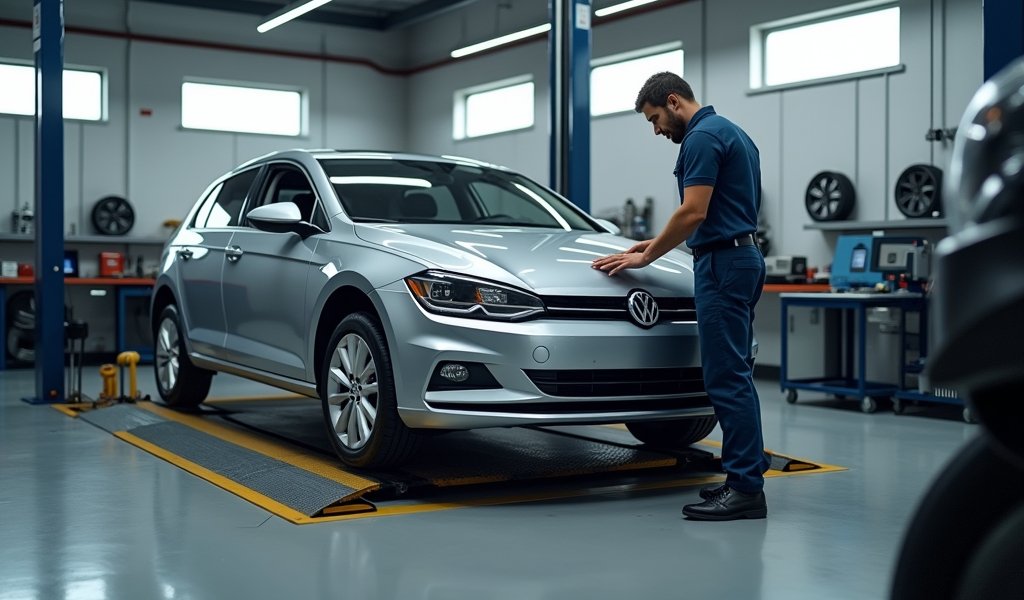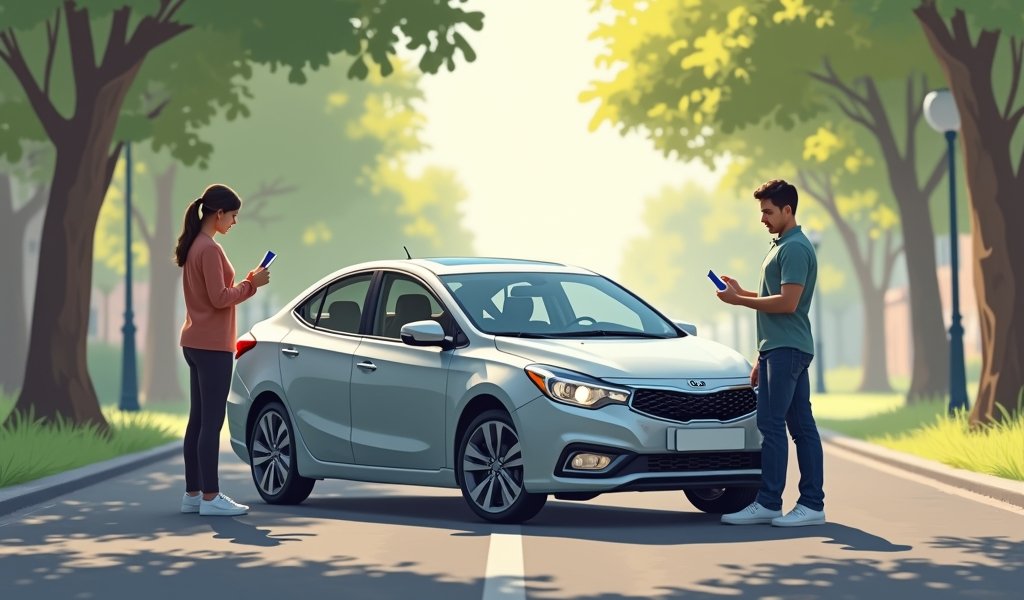Overview
This guide outlines a five-step process for handling minor car crashes: ensure safety, document the scene, exchange information, notify authorities/insurance, and follow up with proper repairs. The article emphasizes that even seemingly minor collisions require thorough documentation and professional assessment to address hidden damage and protect yourself legally and financially.
Table of Contents
- What is a Minor Car Crash?
- Step 1: Ensure Safety First
- Step 2: Document the Scene
- Step 3: Exchange Information
- Step 4: Notify Authorities and Insurance
- Step 5: Follow Up and Repair
- Common Mistakes to Avoid After a Minor Crash
- Conclusion
- Frequently Asked Questions
What is a Minor Car Crash?
Even the most careful drivers can experience what to do in a minor car crash situations. As a professional mechanic with 15 years of collision repair experience, I’ve seen countless fender benders and their aftermath. Minor car crashes typically involve low-speed impacts resulting in cosmetic damage, small dents, scratches, or broken lights—without serious injuries or major structural damage to the vehicle.
These incidents happen every day: backing into a pole at the supermarket, getting rear-ended at a stop sign, or having someone door-ding your vehicle in a parking lot. While they may seem insignificant compared to major accidents, how you respond can significantly impact your insurance rates, vehicle repair costs, and potential legal implications.
The next few minutes after a minor collision are crucial. Having a clear, step-by-step approach will help you navigate this stressful situation with confidence. Should you find yourself overwhelmed or uncertain at any point, remember you can always call us at (123) 456-7890 for professional guidance specific to your situation.
Step 1: Ensure Safety First
The moments immediately following a crash can be disorienting, but safety must be your top priority. First, take a deep breath and check yourself and your passengers for any injuries, even minor ones. Sometimes adrenaline masks pain, so be thorough in your assessment.
Next, evaluate whether it’s safe to remain in your current position. If the crash occurred in moving traffic and your vehicle is drivable, signal and carefully move to the shoulder or nearest safe area. This reduces the risk of secondary collisions, which can sometimes be more dangerous than the initial impact. Turn on your hazard lights to alert other drivers.
If you’re unable to move the vehicle, or if it would be unsafe to do so:
- Keep your hazard lights on
- Set up reflective triangles if available
- Stay inside your vehicle with seatbelts fastened if you’re in heavy traffic
- Exit the vehicle and move to a safe location if there’s risk of fire or if you’re in a dangerous position
Once you’re in a secure location, turn off your engine to prevent any potential fuel leaks or fire hazards. This is particularly important if you notice fluids leaking from your vehicle. According to the National Highway Traffic Safety Administration, remaining calm and assessing safety hazards can prevent a minor incident from escalating into something more serious.
If anyone appears injured, even slightly, err on the side of caution and call 911 immediately. Remember, some injuries like whiplash or internal trauma might not be immediately apparent. Need expert advice about assessing vehicle safety after an accident? Call us at (123) 456-7890 for a professional consultation.

Step 2: Document the Scene
Once safety is established, thorough documentation becomes your next priority. As a mechanic who’s helped countless customers navigate insurance claims, I can’t stress enough how critical proper documentation is for a smooth claims process. Your smartphone is your best tool here—use it liberally.
Start by taking wide-angle photos that capture the entire scene, including the positions of all vehicles involved, road conditions, weather, traffic signs, and signals. These contextual details may become important for establishing how the accident occurred. Then document the car crash thoroughly for your insurance by taking close-up photos of all damage to each vehicle, no matter how minor it seems.
Document these specific elements:
- All four sides of each vehicle involved, even undamaged areas
- License plates of all vehicles
- Close-ups of all visible damage, including scratches, dents, and broken parts
- Skid marks, debris, or fluid spills on the road
- Any relevant traffic signs, signals, or road markings
- Weather and road conditions that might have contributed
Beyond photos, jot down your recollection of the incident while it’s fresh in your mind. Note the time, date, location, and sequence of events. If there were witnesses, politely ask for their contact information and a brief statement of what they observed. This unbiased third-party perspective can be invaluable if there’s any dispute about what happened.
Research from the Insurance Information Institute shows that claims with comprehensive documentation are processed up to 30% faster than those with minimal evidence. If you’re unsure about what to document or need guidance specific to your situation, don’t hesitate to call us at (123) 456-7890.
Step 3: Exchange Information
After ensuring safety and documenting the scene, it’s time to exchange information with the other driver(s) involved. This step is crucial, even in seemingly minor fender-benders where damage looks insignificant. As a mechanic who’s seen “minor” damage reveal more significant underlying issues during repair, I recommend always completing this step thoroughly.
Approach the exchange calmly and professionally. Remember, this isn’t about determining fault—that’s for insurance companies and potentially law enforcement to decide. Focus on collecting the necessary information without discussing blame or making accusations. It’s worth knowing what information to exchange after a wreck before an incident happens.
Essential information to collect includes:
- Full name and contact information (phone number, email)
- Driver’s license number
- Vehicle make, model, year, color, and license plate number
- Insurance company name, policy number, and contact information
- Names and contact information of any passengers
- Address of the accident location
Modern technology makes this easier than ever. Consider using your phone to take photos of the other driver’s license, registration, and insurance card (with their permission) instead of writing everything down. This reduces the chance of transcription errors and ensures you have all the details you need.
If the other driver is uncooperative or seems impaired, keep your distance and wait for law enforcement to arrive. Never force a confrontation. Similarly, if they’re uninsured or suggest handling the incident without involving insurance, proceed with caution. What seems like a simple cash transaction can become complicated if additional damage is discovered later.
For added security, if possible, verify the phone number they provide by calling it on the spot. This simple step can save significant hassle later if you need to reach them. Need assistance with what information is legally required in your state? Call us at (123) 456-7890 for guidance.
Step 4: Notify Authorities and Insurance
After exchanging information, you’ll need to decide whether to involve law enforcement. In many jurisdictions, police reports are required for accidents involving injuries or damage above a certain threshold (typically $500-2,000, depending on your state). As a mechanic who’s assessed thousands of collision repairs, I can tell you that damage often exceeds these thresholds even when it appears minor.
When in doubt, call the police. A police report provides an official, objective record of the incident that can be invaluable when filing insurance claims. Even if officers tell you it’s a “non-reportable” accident, they can still document the scene and provide an incident number that insurance companies may request.
While waiting for law enforcement (if applicable), call your insurance company to report the accident. Most insurers have 24/7 claims hotlines specifically for this purpose. Early reporting accomplishes several things:
- Establishes your version of events promptly in the official record
- Allows your insurer to guide you through next steps
- May accelerate the claims process
- Helps protect you if the other party later makes unexpected claims
Be factual and concise when reporting to both police and insurance. Stick to what happened without speculating about fault or making statements like “I’m sorry” that could be interpreted as admitting liability. Provide the documentation you gathered in Step 2, including photos and witness information.
According to a study by the Insurance Research Council, claims reported within 24 hours are processed significantly faster than delayed reports. Additionally, prompt reporting reduces the likelihood of disputed claims by nearly 30%.
If you’re uncertain about your policy coverage or need help understanding the claims process for your specific situation, call us at (123) 456-7890 for professional guidance. Having helped countless customers navigate post-accident procedures, we can clarify what to expect next.

Step 5: Follow Up and Repair
Once you’ve completed the immediate post-accident steps, it’s time to focus on vehicle assessment and repair. As a mechanic specializing in collision repair, I’ve seen how proper follow-up can save thousands in unexpected costs and ensure your vehicle’s safety and longevity.
First, obtain a thorough professional inspection, even if damage appears cosmetic. Modern vehicles have complex systems of crumple zones, sensors, and safety equipment that can be compromised in even low-speed collisions. What looks like a simple bumper scratch might be hiding damage to cooling systems, sensor calibration issues, or frame alignment problems.
When selecting a repair shop:
- Choose certified collision repair specialists familiar with your vehicle make
- Ask if they work directly with your insurance company
- Request OEM (Original Equipment Manufacturer) parts when possible
- Inquire about warranty coverage for repairs
- Check reviews and ask for recommendations from trusted sources
Remember that you have the right to choose your repair facility in most states, regardless of what your insurance company might suggest. Take advantage of this by selecting a shop that prioritizes quality and safety over quick, inexpensive fixes. Be especially wary of rushing structural or safety-related repairs.
Keep detailed records of all repair-related communications and receipts. These documents may be needed for insurance reimbursement, warranty claims, or if you sell the vehicle in the future. A properly documented repair history helps maintain your vehicle’s value and provides peace of mind to potential buyers.
If you’re experiencing any new noises, vibrations, pulling to one side, or warning lights after the collision or repair, address these immediately. These symptoms can indicate underlying issues that weren’t initially apparent. For a comprehensive post-accident inspection or to discuss repair options for your specific vehicle, call us at (123) 456-7890. Our team can help ensure your vehicle is restored to pre-accident condition with safety as the priority.
Common Mistakes to Avoid After a Minor Crash
Through my years in the automotive repair industry, I’ve witnessed countless drivers make avoidable mistakes after minor collisions that ended up costing them significantly—both financially and legally. Being aware of these common pitfalls can help you navigate the post-accident process more smoothly.
One of the most frequent mistakes is leaving the scene too quickly. Even when damage seems negligible, departing without exchanging information can constitute hit-and-run in many jurisdictions—a serious offense with potential criminal implications. Always complete the proper car accident checklist before leaving the scene.
Another critical error is neglecting hidden damage. I’ve opened seemingly minor dented fenders to discover damaged mounting points, compromised structural components, and affected electronic systems that doubled or tripled the initial repair estimate. This is why professional inspection is essential, even when damage appears superficial.
Additional mistakes to avoid include:
- Admitting fault at the scene (let insurance companies and authorities determine liability)
- Neglecting to file a police report (which may be required by law and your insurance)
- Delaying notification to your insurance company (which could violate policy terms)
- Accepting quick cash settlements on the spot (before full damage assessment)
- Skipping medical evaluation (some injuries manifest days after the incident)
- Posting details or photos of the accident on social media (which can impact claims)
Perhaps the most costly mistake is attempting DIY repairs for anything beyond extremely minor cosmetic issues. Modern vehicles are complex systems where improper repairs can compromise safety features, void warranties, and create cascading problems that ultimately cost more than professional repair would have initially.
According to data from the National Highway Traffic Safety Administration, approximately 20% of vehicles involved in minor collisions have safety-critical systems affected that aren’t immediately visible. This statistic underscores why proper professional assessment is crucial even for seemingly minor incidents.
If you’re uncertain about how to proceed after a minor crash or need advice specific to your situation, don’t hesitate to call us at (123) 456-7890. Our experienced team can help you avoid these common pitfalls and guide you through the proper post-accident procedures.
Conclusion
Knowing what to do in a minor car crash can transform a stressful situation into a manageable one. By following these five essential steps—ensuring safety, documenting the scene, exchanging information, notifying authorities and insurance, and properly following up with repairs—you protect yourself legally, financially, and physically.
Minor collisions happen to even the most careful drivers, but your response in those crucial moments afterward makes all the difference. The systematic approach outlined in this guide helps ensure you don’t overlook critical details that could impact your insurance claim, vehicle safety, or legal standing.
Remember that what appears to be minor damage can sometimes hide more significant issues that compromise your vehicle’s structural integrity or safety systems. This is why professional assessment is always recommended, even when the visible damage seems cosmetic.
Keep this guide bookmarked or printed in your glove compartment alongside your registration and insurance information. Being prepared before an incident occurs helps you remain calm and collected when facing the unexpected.
If you find yourself involved in a minor collision and have questions about proper procedure or vehicle assessment, our team of certified professionals is ready to help. Call us at (123) 456-7890 for guidance specific to your situation. With the right approach and professional support, you can navigate the aftermath of a minor car crash with confidence and peace of mind.
Frequently Asked Questions
Do I need to call the police for a very minor fender bender?
In most states, you’re legally required to report accidents with injuries or damage exceeding $500-1,000. When in doubt, call the police to create an official record that can protect you if complications arise later.
Can I just settle with cash instead of involving insurance for minor damage?
While cash settlements might seem convenient, they provide no protection if hidden damage is discovered later or if the other party claims injuries. Insurance involvement creates an official record and ensures proper coverage.
Will my insurance rates increase after reporting a minor accident?
Not necessarily. Many insurers offer accident forgiveness for first incidents or minor claims, especially if you weren’t at fault. Your long-term driving record and policy details influence rate changes more than a single minor incident.
How soon after a minor accident should I get my car checked?
Have your vehicle professionally inspected as soon as possible, ideally within 24-48 hours. Modern vehicles can have damaged systems that aren’t immediately visible but could compromise safety if left unaddressed.
What if the other driver doesn’t want to share insurance information?
If the other driver refuses to share information, document their license plate and vehicle details, then call the police immediately. Refusal to exchange information after an accident is typically illegal and raises red flags about their insurance status.

